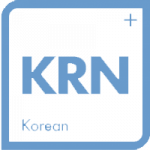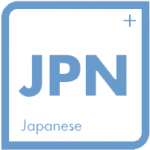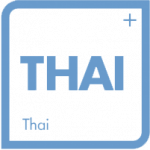Related Languages
Department: Yamada Language Center
Number of Users Worldwide: 544 million
Offerings: LT 199 – Self-Study Program
Although known as the land of snake-charmers, mythologies, mysticism, and diversity – India is now also a land of opportunities. The growth of modern science and technology in India is changing the patterns of life and is posing many a research question. Hindi provides a glimpse into this progressive culture standing the litmus test of time. Learning Hindi is as simple as learning any other language of the world. It just requires students to once more be persistent, ignorant, imitative, innocent and inquisitive as everyone is in one’s childhood. Did you learn or acquire your mother tongue? Is acquisition of a language possible after critical age?
Department: Department of East Asian Languages and Literature
Number of Users Worldwide: 127 million
Offerings: Levels 100-600, SLAT, Minor, BA, Master’s, Ph.D.
Japanese is spoken by 120 million natives of the Japanese islands and by an additional 2 million people outside of Japan, primarily in South America and the United States. As Japan emerged as an economic power in the second half of the twentieth century, its language became common on the international business scene. Japan is also the home of one of the world’s oldest continuously existing civilizations. The study of Japanese is thus rewarding not only for its practical benefits, but also for the introduction it offers to a rich cultural and literary tradition still largely unknown to the majority of Westerners.

Department: East Asian Languages and Literature
Number of Users Worldwide: 77 million
Offerings: Levels 100-400, SLAT, Minor, BA, Master’s
Korean is the official language of both North Korea and South Korea, which have a total combined population of around 73 million (23 million in the North and 50 million in the South). Korean is also spoken in large ethnic Korean communities in the USA, China, Japan, and Central Asia. In the past, Korean was often written using Chinese characters or Hanja. However, use of Hanja has now more or less been replaced by an indigenous alphabetic script known as Hangul, which was invented in 1443 by King Sejong (possibly with the help of other scholars).
Department: East Asian Languages and Literature
Number of Users Worldwide: 960 million
Offerings: Levels 100-600, Flagship Program, SLAT, Minor, BA, Master’s, PhD
The Chinese language is the oldest written language in the world with at least six thousand years of history. Chinese character inscriptions have been found in turtle shells dating back to the Shang dynasty (1766-1123 BC) proving the written language has existed for more than 3,000 years. The Chinese written language uses single distinctive symbols, or characters, to represent each word of the vocabulary.
Department: Russian, East European, and Eurasian Studies
Number of Users Worldwide: 260 million
Offerings: Levels 100-500, Minor, BA, Master’s
The Russian, East European and Eurasian Studies is the home of undergraduate and graduate programs in all fields connected to Russia, Eastern Europe, and former Soviet Eurasia at the University of Oregon. Together with its sister programs in the Oregon Consortium of International and Area Studies Programs (OCIAS), the Center is located in Prince Lucien Campbell Hall (PLC) on the University of Oregon campus.
Department: Yamada Language Center
Number of Users Worldwide: 44 million
Offerings: LT 199 – Self-Study Program
Thai is a Tai-Kadai language spoken by about 65 million people mainly in Thailand (ประเทศไทย), as well as the Midway Islands, Singapore, the UAE and the USA Thai is closely related to Lao, and northern dialects of Thai are more or less mutually intelligible with Lao, particularly the Lao spoken in northern Thailand. Thai vocabulary includes many words from Pali, Sanskrit and Old Khmer.
Department: Yamada Language Center
Number of Users Worldwide: 75 million
Offerings: LT 199 – Self-Study Program
Vietnamese (tiếng Việt) is the national and official language of Vietnam. It is the native language of the Vietnamese (Kinh) people, as well as a first or second language for many ethnic minorities of Vietnam. As the result of Vietnamese immigration and cultural influence, Vietnamese speakers are found throughout the world, notably in East and Southeast Asia, North America, Australia and Western Europe. It is part of the Austroasiatic language family of which it has by far the most speakers (several times as many as the other Austroasiatic languages combined).





